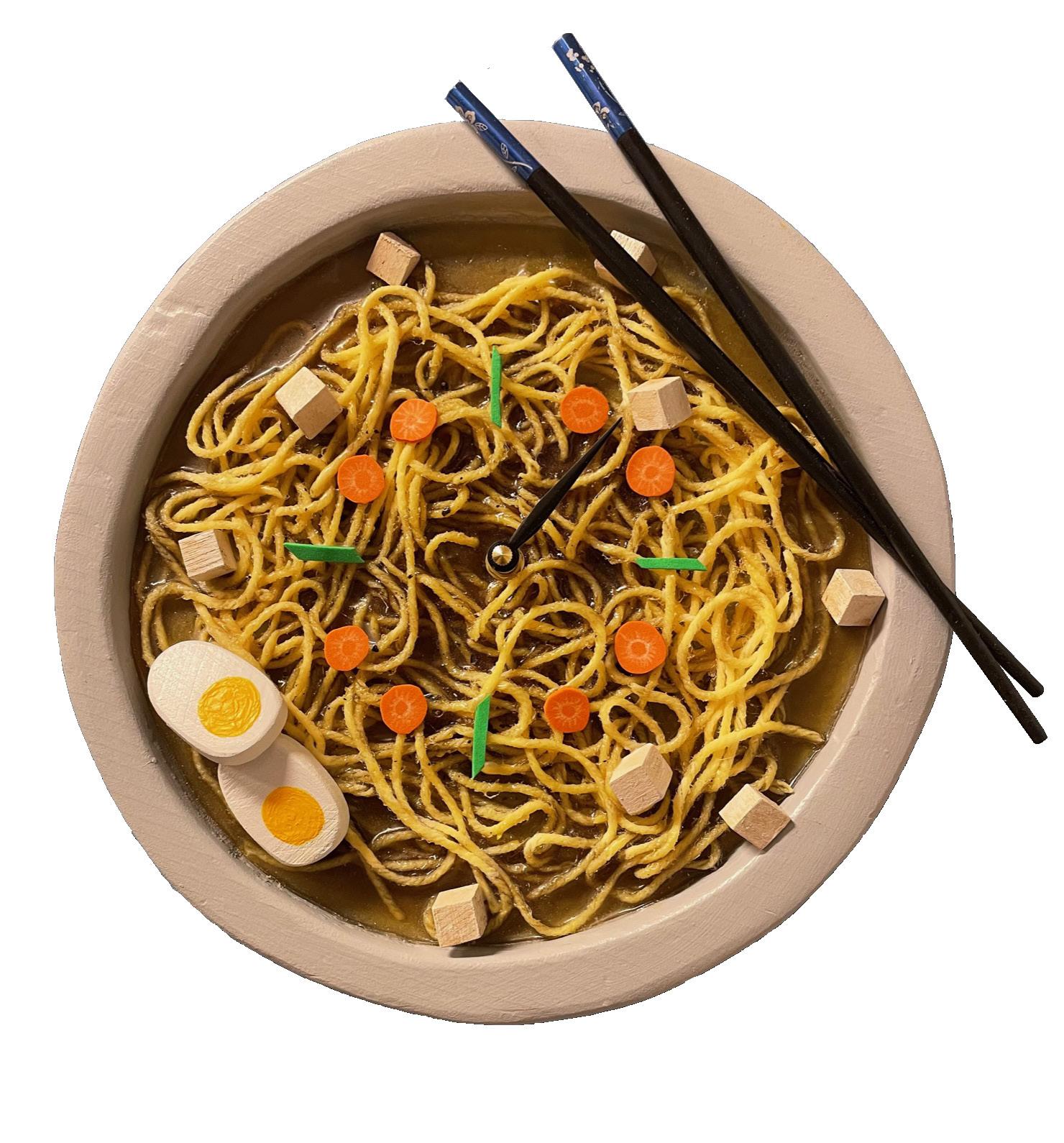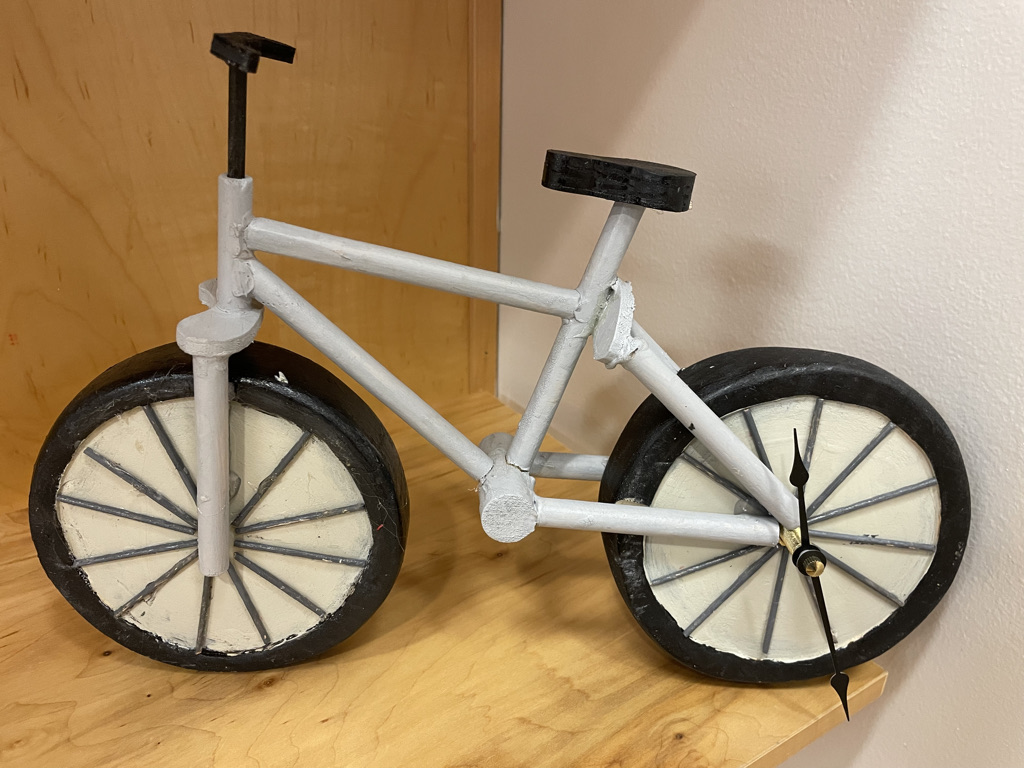
3 minute read
Wooden Clocks: A Staple Project at Peck
When is a clock not really a clock?
The answer to that question lies in the Peck woodshop in the Arts wing that houses power tools, wood scraps, and of course, Mr. Mortensen.
Peck's beloved woodworking teacher of more than 30 years, guides fifth-through-eighth graders on their woodworking journeys. Mark Mortensen approaches his craft with the ability to see beyond just a piece of wood—and helps his students do the same—to envision the limitless creative potential of this humble medium.
“The research is behind it,” says Mortensen. “Kids who flex these different kinds of ‘muscles’ in their brains tend to do better in math and science classes. They’re working through a plan of procedures, and thinking spatially, linearly, sequentially— do I assemble these parts, how do I fit this piece?—and at the end, when they’re holding something they created, it’s a very hands on experience of success.”
Woodworking in Mortensen’s shop also taps deep into the imagination. In the seventh grade, for example, students are challenged to design and build an analog clock that has personality.

The clock project is one of Mortensen’s favorites. Every student starts at the same place, but, as Mortensen says, “the uniqueness of 45 clocks across a grade is really quite striking. These clocks transcend utility into real works of art.”
Mortensen has been overseeing clock projects at Peck for decades, but he’s the first to admit that students exceeded his artistic expectations from the get-go. “The first prototype I made was very basic. I wanted something to hold up and give the gist of the project,” he laughs. “And I tell the kids I’m completely embarrassed by it!”
The brainstorming process is critical because it forces students to slow down and really think through what might represent them and their interests. Often, they begin with their favorite foods, vacation spots, or hobbies.

At this stage, students don’t yet understand all that their clocks can be. But as they move forward, Mortensen is ready with gentle nudges and suggestions borne from both his experiences as a teacher and his perspective as an artist.
“The student who made the ramen bowl clock? The question became, ‘what should we use for noodles?’” he says. “We didn’t know, but then I suggested, ‘what if we soak some string in glue and then pile it up?”
He continued, “She experimented, trying two or three different things until settling on white yarn soaked in aliphatic resin (wood glue), which has a yellow tint to it—and it was perfect! And then, what are we going to do for the broth? We mixed up a batch of fiberglass resin with a little brown paint.”

Whether it’s spoons or clocks, or any other woodworking projects to come out of Peck’s woodworking program, these projects transcend the final product. Each becomes a personal journey toward a “can-do” mindset, drawing out artistry, resilience, and the satisfaction of finding just the right combination of design and execution.
“So many students take great pride and satisfaction in what they create,” said Mortensen. “We’re not looking for perfection, but we try to push the kids to try to get the best out of themselves.”










